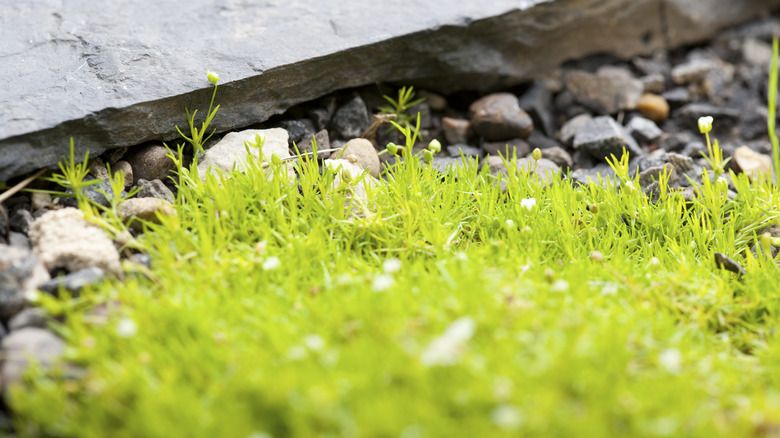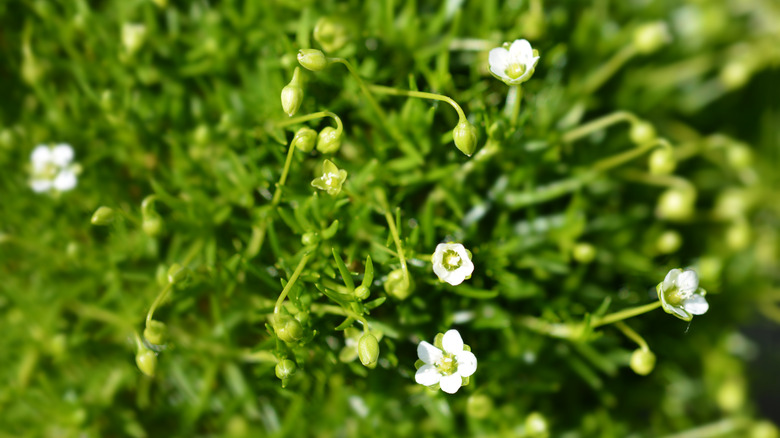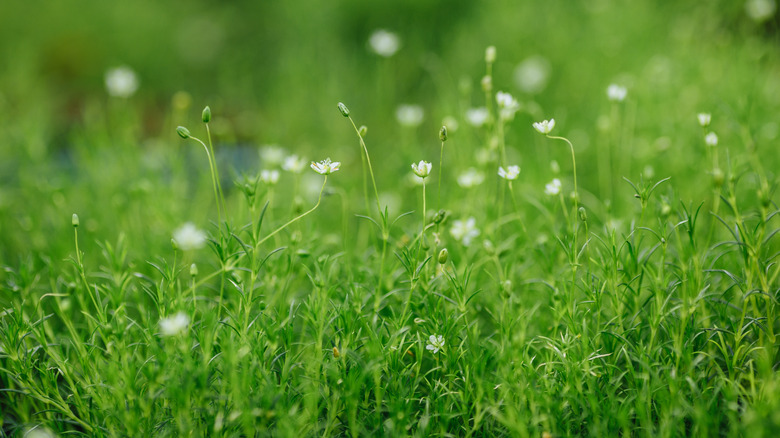What's The Difference Between Scotch And Irish Moss?
If you are considering creating a moss lawn instead of a grass lawn, you may be researching the different types of plants that are available. Two of the most popular types that you can plant as a lawn or in a garden, because they resemble more traditional plants, are Scotch and Irish moss. Each one offers different shades of green and tends to thrive in slightly different conditions, which makes picking the right one for your needs important.
One of the biggest differences between Irish and Scotch moss is the color of the plants. Scotch has a yellow-green color in the stems and leaves, while Irish has a deeper green color. Scotch is slightly taller, growing to a height of about two inches versus about one inch for Irish. However, individual Irish plants tend to spread horizontally across the ground farther than Scotch does. They have different names, too. If you see names like arenaria verna, moss sandwort, or Scottish moss, they refer to Scotch. Names like sagina subulata, heath pearlwort, or awl-leaf pearlwort refer to Irish.
They have a few similarities as well. Both plants blossom with tiny white flowers. Both are true mosses, meaning they have the characteristics of a plant. There are some types of greenery that many people consider to be mosses but that actually are lichen. Lichen is more like a fungus or an algae.
Areas where Irish and Scotch moss grow
Both Scotch and Irish mosses grow well in temperate climates in North America and Europe. They both grow in similar areas in the continental United States, thriving as far north as the U.S.-Canadian border, although they will struggle in the northern halves of Montana, North Dakota, Minnesota, and Maine. They also struggle in higher elevations in Colorado and Wyoming.
In the south, Irish moss may struggle in southern Florida, Texas, and Louisiana, as well as across most of California and Arizona and in western Washington and Oregon. Scotch moss struggles in far south and western areas like the Irish, but it also may not grow well in parts of Oklahoma, Arkansas, North Carolina, and Virginia, as well as in most of the southeastern and western U.S.
You might see these mosses growing wild in your garden in certain areas of the United States. However, when you see a fuzzy green growth on rocks or your roof in these areas, this almost certainly is not Irish or Scotch moss, which strongly resembles plants. Meanwhile, the growth on rocks and roofs typically doesn't resemble a plant.
If it does, and if you can see tiny stems and leaves, the growth could consist of a particular variety of moss other than Irish or Scotch. Otherwise, you're almost certainly looking at lichen or a fungus. Fuzzy lichen does not grow vertically, so it doesn't work as well as a ground cover like Irish and Scotch do.
How to make use of Irish and Scotch moss
Growing moss is a way to provide ground cover in your yard or to add accents to a flower garden. If you have an interest in successfully growing Irish or Scotch moss, you will want to make sure you're planting each one in the area that gives it the best chance at success. Both varieties will grow best in full-sun areas in cooler climates, as long as they receive regular watering. In the southern half of the U.S. and in similar warmer climates, giving these mosses some afternoon shade should help them thrive.
Irish moss works well in places like rock gardens as a thick coverage or in flower gardens as an accent. It is also usable as a replacement for grass in areas of the yard where you want ground cover to provide a green color, rather than bare spots where you can't grow traditional grass easily. Irish moss does not need regular mowing, although you can use a trimmer on it to keep it looking nice. It stands up to light foot traffic, once established.
Scotch moss also works nicely in a rock garden. However, it tends to take longer to provide a full blanket of coverage versus the Irish variety. Some people like the look of placing Scotch between paving stones in a flower garden for a splash of green. However, Scotch struggles as ground cover in areas with significant foot traffic.


